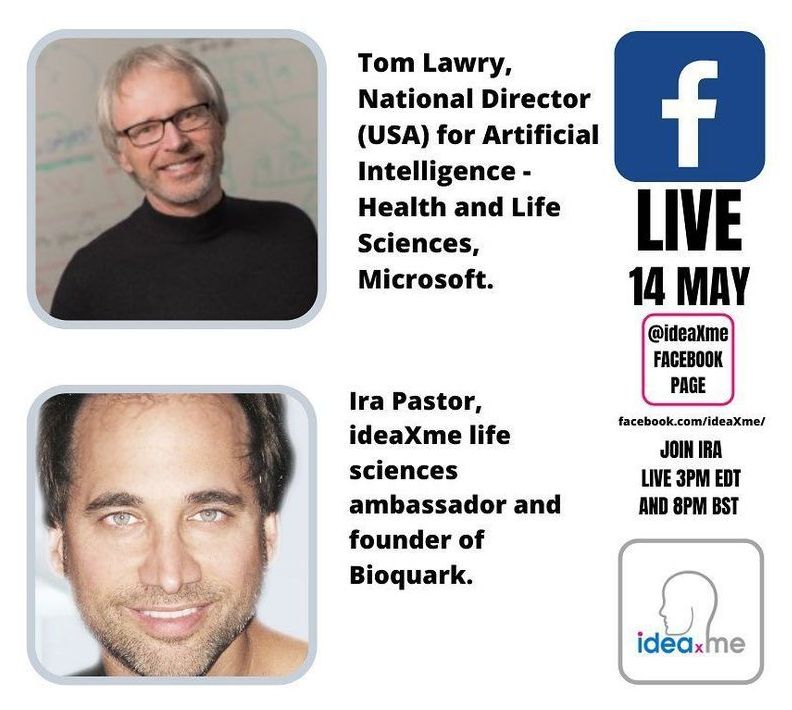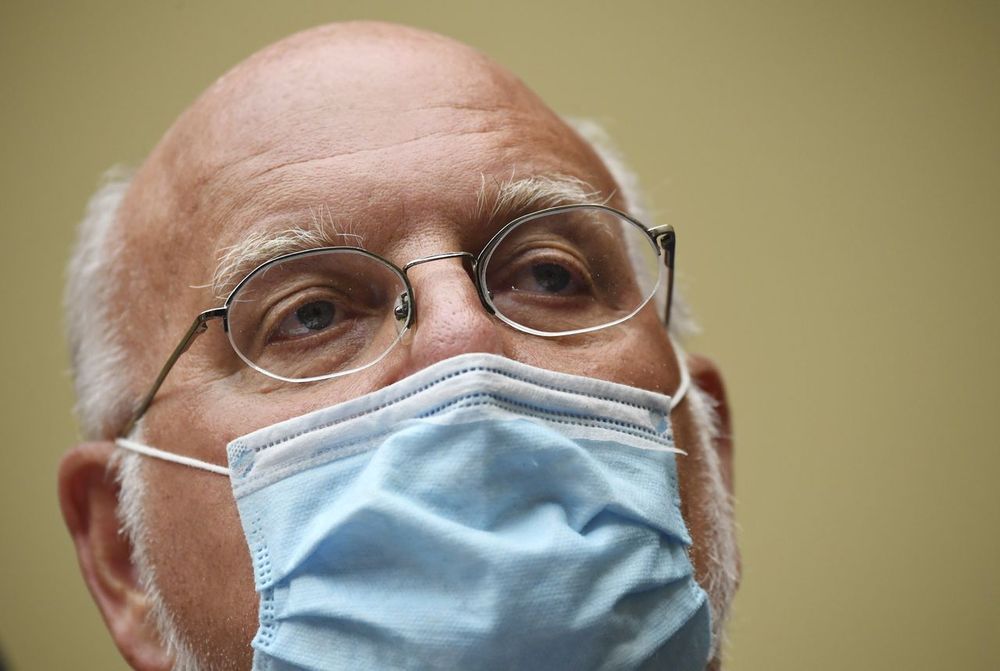Ira Pastor ideaXme life sciences ambassador with Tom Lawry Microsoft on the ideaXme page — Facebook LIVE tomorrow! #health #microsoft #ideaxme #movethehumanstoryforward #medtech #medtechlife🔬💉 #microsofthealthcare #microsofthealthapp #healthcare



A pioneer in Emotion AI, Rana el Kaliouby, Ph.D., is on a mission to humanize technology before it dehumanizes us.
At LiveWorx 2020, Rana joined us to share insights from years of research and collaboration with MIT’s Advanced Vehicle Technology group.
Part demo and part presentation, Rana breaks down the facial patterns that cameras can pick up from a tired or rested driver, and observations from the first ever large-scale study looking at driver behavior over time.
Learn how these inferences can be used to change the driving experience ➡️ https://archive.liveworx.com/sessions/artificial-emotional-i…it-matters
Today’s devices work hand-in-hand with humans –at work, home, school and play. Dr. Rana el Kaliouby believes they can do much more. An expert in artificial emotional intelligence, or “Emotion AI,” Dr. el Kaliouby explores the valuable applications of humanized technology in media and advertising, gaming, automotive, robotics, health, education and more. She explains how machine learning works, explores the potential for the development of emotion chips, and addresses the ethics and privacy issues of Emotion AI. In her talks, Dr. el Kaliouby gives participants an inside look at the world’s largest emotion data repositoryresults from her research studying more than 5 million faces around the world, and reveals that the emoji mindset may soon be a thing of the past.

Providence, R.I. — The federal government has told states to prepare for a coronavirus vaccine to be ready to distribute by Nov. 1.
The timeline raised concern among public health experts about an “October surprise” — a vaccine approval driven by political considerations ahead of a presidential election, rather than science.
In a letter to governors dated Aug. 27, Robert Redfield, director of the U.S. Centers for Disease Control and Prevention, said states “in the near future” will receive permit applications from McKesson Corp., which has contracted with CDC to distribute vaccines to places including state and local health departments and hospitals.


When we came out of the financial crisis of 2008, cloud computing kicked into high gear and started to become a pervasive, transformational technology. The current COVID-19 crisis could provide a similar inflection point for AI applications. While the implications of AI continue to be debated on the world stage, the rapid onset of a global health crisis and concomitant recession will accelerate its impact.
Times of crisis bring rapid change. Efforts to harness AI technologies to discover new drugs – either vaccine or treatment – have kicked into hyperdrive. Startups are racing to find solutions and established companies are forming partnerships with academia to find a cure. Other companies are researching existing drugs for their potential applicability. AI is proving a useful tool for dramatically reducing the time needed to identify potential drug candidates, possibly saving years of research. AI uses already put into action are screening for COVID-19 symptoms, decision support for CT scans, and automating hospital operations. A variety of healthcare functions have started to be performed by robots, from diagnosis to temperature monitoring.
Whatever the new normal becomes in the aftermath of the current crisis, it’s apparent that AI will be an even larger part of the technology landscape going forward — and not only for healthcare.
Cardiovascular-related disorders are a significant worldwide health problem. Cardiovascular disease (CVD) is the leading cause of death in developed countries, making up a third of the mortality rate in the US1. Congenital heart defects (CHD) affect ∼1% of all live births2, making it the most common birth defect in humans. Current technologies provide some insight into how these disorders originate but are limited in their ability to provide a complete overview of disease pathogenesis and progression due to their lack of physiological complexity. There is a pressing need to develop more faithful organ-like platforms recapitulating complex in vivo phenotypes to study human development and disease in vitro. Here, we report the most faithful in vitro organoid model of human cardiovascular development to date using human pluripotent stem cells (hPSCs). Our protocol is highly efficient, scalable, shows high reproducibility and is compatible with high-throughput approaches. Furthermore, our hPSC-based heart organoids (hHOs) showed very high similarity to human fetal hearts, both morphologically and in cell-type complexity. hHOs were differentiated using a two-step manipulation of Wnt signaling using chemical inhibitors and growth factors in completely defined media and culture conditions. Organoids were successfully derived from multiple independent hPSCs lines with very similar efficiency. hHOs started beating at ∼6 days, were mostly spherical and grew up to ∼1 mm in diameter by day 15 of differentiation. hHOs developed sophisticated, interconnected internal chambers and confocal analysis for cardiac markers revealed the presence of all major cardiac lineages, including cardiomyocytes (TNNT2+), epicardial cells (WT1+, TJP+), cardiac fibroblasts (THY1+, VIM+), endothelial cells (PECAM1+), and endocardial cells (NFATC1+). Morphologically, hHOs developed well-defined epicardial and adjacent myocardial regions and presented a distinct vascular plexus as well as endocardial-lined microchambers. RNA-seq time-course analysis of hHOs, monolayer differentiated iPSCs and fetal human hearts revealed that hHOs recapitulate human fetal heart tissue development better than previously described differentiation protocols3,4. hHOs allow higher-order interaction of distinct heart tissues for the first time and display biologically relevant physical and topographical 3D cues that closely resemble the human fetal heart. Our model constitutes a powerful novel tool for discovery and translational studies in human cardiac development and disease.
The authors have declared no competing interest.

Antibiotic resistance is a global human health threat, causing routine treatments of bacterial infections to become increasingly difficult. The problem is exacerbated by biofilm formation by bacterial pathogens on the surfaces of indwelling medical and dental devices that facilitate high levels of tolerance to antibiotics. The development of new antibacterial nanostructured surfaces shows excellent prospects for application in medicine as next-generation biomaterials. The physico-mechanical interactions between these nanostructured surfaces and bacteria lead to bacterial killing or prevention of bacterial attachment and subsequent biofilm formation, and thus are promising in circumventing bacterial infections. This Review explores the impact of surface roughness on the nanoscale in preventing bacterial colonization of synthetic materials and categorizes the different mechanisms by which various surface nanopatterns exert the necessary physico-mechanical forces on the bacterial cell membrane that will ultimately result in cell death.

In a recent study conducted in mice, researchers became one step closer to that understanding, discovering that exercise actually strengthens the brain’s resilience to stress. Exercise helps animals cope with stress by enabling an uptick in a crucial neural protein called galanin, the study suggests. This process influences stress levels, food consumption, cognition, and mood.
Leveraging this finding, researchers were able to genetically tweak even sedentary mice’s levels of galanin, shifts that lowered their anxious response to stress.
The study’s authors explain that this study helps pin down the biological mechanisms driving exercise’s positive effects on stress. While further human experiments are needed to confirm these findings, the researchers have practical advice for people looking to get these benefits: perform regular, aerobic exercise.
MILLIONS MORE are going to die before the covid-19 pandemic is over. That is the stark message of Bill Gates, a co-founder of Microsoft and one of the world’s largest philanthropists via the Bill & Melinda Gates Foundation, in an interview with Zanny Minton Beddoes, The Economist’s editor-in-chief, in early August. Most of these deaths, he said, would be caused not by the disease itself, but by the further strain on health-care systems and economies that were already struggling.
But he offered reasons for hope in the medium term, predicting that by the end of 2021 a reasonably effective vaccine would be in mass production, and a large enough share of the world’s population would be immunised to halt the pandemic in its tracks.
1) If “Most of these deaths, he said, would be caused not by the disease itself, but by the further strain on health-care systems and economies that were already struggling.”, how will a vaccine at the end if 2021 magically change that? 2) No one knows what will happen in the future, but one knows what one wants to happen. It is called a plan for 2021, not a prediction of 2021. 3) What about treatments?
But millions of deaths are yet to come in poor countries.